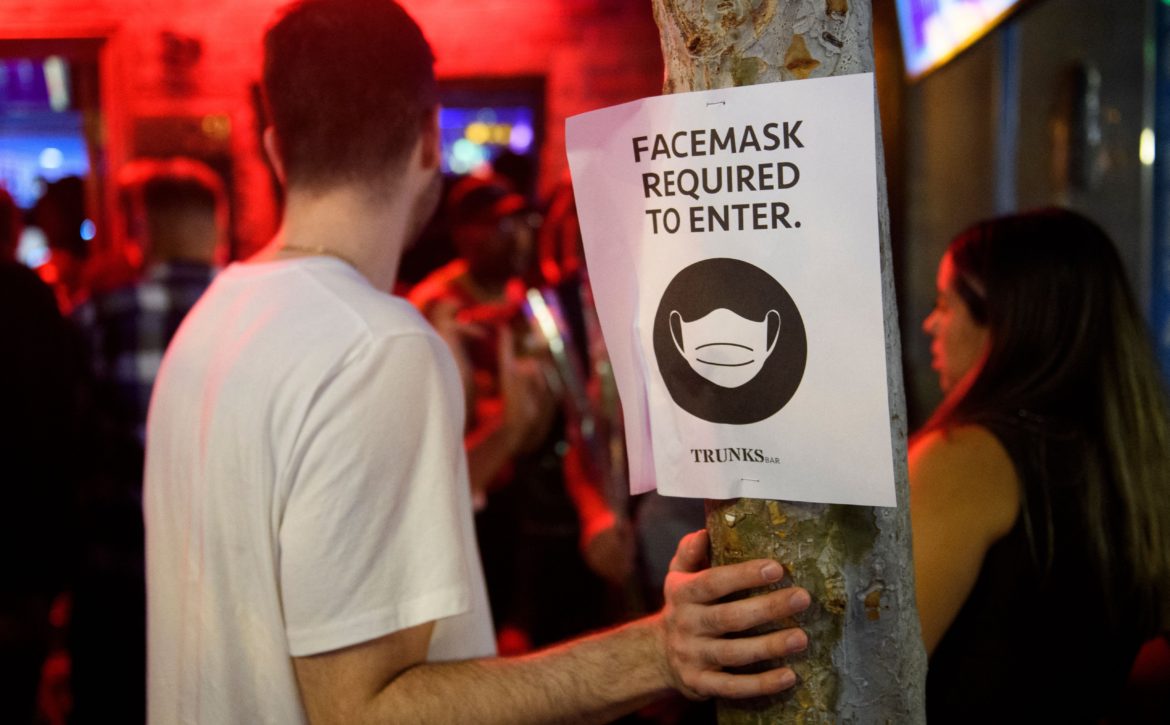
Don’t Call It a Pandemic of the Stupid
This summer, the lines at vaccination centers suddenly got shorter. After a few desperate months of shot chasing and limited supply, it seemed (especially to well-resourced, privileged people) as though anyone in the U.S. who wanted a Covid-19 vaccine could get one without much trouble—and that the only barriers to widespread protection were personal choices.The mood toward the unvaccinated began to shift. If they haven’t gotten vaccinated yet, that’s their problem, friends told me. I don’t want to wear a mask to protect other people if they won’t protect themselves. Then Covid-19 cases began spiking throughout the country, and new evidence emerged that the vaccines don’t protect against infection from the delta variant as well as against other variants. They are still highly effective at preventing hospitalization and death, but even so, the murmur became a roar: The unvaccinated aren’t just threatening their health, they’re threatening ours as well. This anger is understandable. After all, personal health decisions reverberate within our communities. Even not wearing a seatbelt, which might seem like a classic example of an individual action, has direct consequences for others. Ending the pandemic is impossible without collective action.But shaming and blaming individuals, and assuming they have made a selfish, considered decision not to get vaccinated, overlooks the largely hidden inequalities that still serve as barriers to vaccination. Unvaccinated people are more likely to be lower-income, uninsured, from marginalized and neglected communities, and have lower levels of education. All of these factors contribute to another, less-noted phenomenon: information inequality. The inability to access and evaluate quality information can lead to what health researcher Dr. Jessica Jaiswal calls “inequality-driven mistrust.” If you don’t make much money, you may not have reliable internet access or news subscriptions. If you have lower levels of education, it’s harder to make sense of the (often false or misleading) information you find out there. You may be wary of doctors and government officials because of the way they’ve mistreated you in the past, and you may fear you’ll be charged for the shot if you don’t have insurance. Going, say, door-to-door with vaccines solves only one issue of access; if you don’t have trusted sources of information offering good reasons to accept it, you might still refuse a shot.“The kinds of information that you have access to differ systematically depending on who you are, where you live [and] other aspects of socioeconomic status,” Carl T. Bergstrom, a professor at the University of Washington, told me. We all have different networks, both in person and online, for receiving information—and those networks can be strikingly unequal, he said. “People are disadvantaged by being in certain positions in this information network. They are bombarded with a lot more misinformation; they may be less able to sort among good information and bad information.”Bergstrom recently coauthored a study about how the internet and social media brought rapid, unprecedented change to our information ecosystems and our social systems, fostering the speedy global spread of disinformation and misinformation—with enormous implications for health and science. This spread can be incredibly damaging in normal times and disastrous during a pandemic. “People’s behavior on social media is directly shaping the way that the United States is able to emerge from this pandemic or the way it fails,” he said.There is a strong, organized movement to undermine confidence in science and vaccines, and to push anti-vaccine propaganda at those who suffer from low-quality information, especially on social media, according to Bergstrom. “That propaganda is, of course, convincing people not to get vaccinated, putting their own lives at risk, and then also allowing them to serve as links in transmission chains,” he said. The causes of these information breakdowns originated long before the current moment. The U.S. education system has frequently failed to teach students how to evaluate the trustworthiness of sources and to evaluate new information, such as the changing science of a pandemic, on the fly. A 2019 study from Stanford University researchers found that high schoolers often struggle to spot inaccurate information online. We also have a broken health system that has mistreated or neglected many who already suffer other forms of inequality. Add to this the fact that the pandemic struck under Donald Trump, a president who mocked scientific expertise, tried to interfere with the vaccine approval process, and sowed health misinformation and doubt.Jaiswal, an assistant professor at the University of Alabama, has researched health-related mistrust, particularly in communities of color and LGBTQ communities, for years. Now, researchers like her are also observing widespread mistrust among white people. “With Covid, we’ve really seen how health-related mistrust is becoming a lot more mainstream. We’re having really large portions of the white population reject the vaccine,” she said. Nearly one-third of white evangelicals, for instance, are opposed to vaccination. “We have really different groups who are arriving at similar conclusions, and I think that just shows how much we have failed—in terms of public health, in terms of government, all of that,” she said.Health hesitations take different shapes for different demographics: “For folks who have been historically and presently minoritized, there’s a lot of good reasons to not trust those official sources of information,” Jaiswal said. “And then, among other groups, there have been very recent political movements to specifically damage the credibility” of agencies like the Centers for Disease Control and Prevention. “Combined, I think we just have a big mess.”The problem is usually not that the unvaccinated haven’t gotten information. It’s that the information is often wrong, and there’s far too much of it. Sifting through the endless studies, news reports, and guidance documents on Covid, not to mention all of the false theories and ideas out there, is daunting. “A lot of it has to do with this information overload that we’re subjected to on a day-to-day basis, and it’s nearly impossible to make sense of that, given all the cognitive biases that we have,” said Rory Smith, research manager at First Draft, a nonprofit focused on combating disinformation and misinformation. And “we’re really behind in terms of thinking critically, in terms of looking at sources and deciding which ones are reliable and which are not.”“Because vaccine-hesitant people are hesitant, and are constantly researching and looking for the most up-to-date information around oftentimes the safety of vaccines, they are prime targets for the anti-vaccination community,” Smith said. Anti-vaccination groups frequently target “fence-sitters” to pull them in their direction, he added. According to The Markup’s Citizen Browser project, official information about Covid is less likely to reach Black people on social media. In that vacuum, anti-vaccination groups are deliberately targeting communities of color, preying on recollections of the Tuskegee experiments as well as ongoing discrimination in the medical system. Campaigns on WhatsApp and social networks like Facebook use language that makes it seem as though their goal is to protect these communities, but it’s actually to distribute disinformation from prominent anti-vaccine groups.It’s “inequity upon inequity rearing their ugly heads,” Jaiswal said. And it’s particularly harmful given that communities of color have disproportionately been affected by Covid-19. This form of inequality has links to broader forces of oppression, she added. “Disinformation campaigns are seeking to preserve the status quo, which I think is completely structured by white supremacy.”All of the righteous indignation over those who haven’t yet been vaccinated elides these differences in how people access and evaluate information. By calling it, as some do, the pandemic of the unvaccinated or, worse, of the stupid, Jaiswal said, “we’re really missing an opportunity to try to figure out the different challenges and concerns that various groups have. And lumping them all together is not going to get us anywhere.” “This is a collective behavioral crisis situation,” Smith said. Mistrust in official sources and persistent gaps in access to information is a huge issue, “and it will require, essentially, interventions at all levels.” For starters, he said, social media companies can reveal exactly how they are combating disinformation and misinformation. “The internet was framed as this place that would democratize information,” he said. “What it really did was democratize all kinds of information without prioritizing quality information. We’re still suffering the consequences of that, and likely will be for a lot longer.”You can change the way your information networks are set up, but it’s an uphill climb—and first, you have to realize there are irregularities and disparities in the first place, according to Bergstrom. Then you might start reading different sites and publications, but what if your aunt is still barraging the family chat with memes and conspiracy theories, and you’re hearing at church that vaccines are suspect? It’s hard to ignore your entire information ecosystem. “We are enmeshed in all kinds of overlapping communities, and you can’t just pick up and change all of that wholesale,” Bergstrom said.Policymakers and health workers need to reach communities where they are, quite literally. For instance, Far Rockaway and Bedford-Stuyvesant, the New York City neighborhoods with the lowest vaccination uptake that were also hit hard by Covid, have not been part of a statewide outreach and education plan. It’s not time to rage at the unvaccinated for their decisions. Instead, it’s time to prioritize all forms of access—even the ones that are hard to see.
Read More


